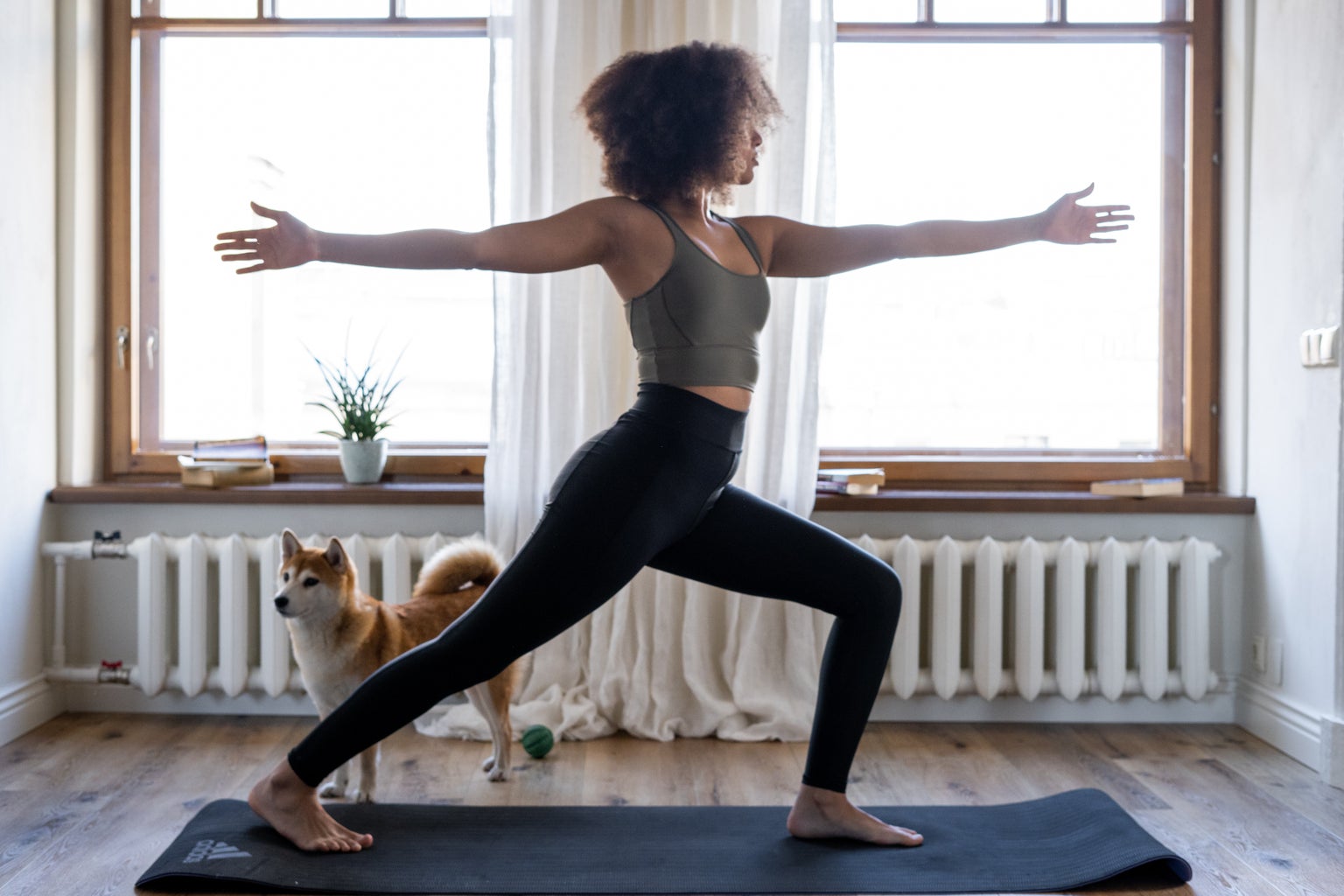Who is “that girl”? If you’re not familiar with her, let me introduce her.
“That girl” is the girl who has a manicured schedule that includes sleeping by midnight and waking up to see the sunrise, that girl who eats an aesthetic breakfast, that girl who goes for spin classes five times a week in cute clothes, that girl who is a living and breathing Pinterest board. That girl who we all want to be, that girl who “has her shit together”.
Popularised by TikTok, it is a trend where we see 15-second videos of “Become That Girl with me” that feature wellness tropes such as clean-eating, mindfulness practices, yoga, bullet journaling, the list goes on.
Now, that sounds like a good thing isn’t it? To work towards having everything in our lives planned, polished and perfected? There is nothing wrong in being reminded to eat your veggies, exercise, cut out toxic friends and meditate. They might even serve as a positive reminder to perform some well-deserved self-care. However, the problem with this trend is that it centers on being an “aesthetic” — curating a collection of activities to fit a certain image, rather than for the value of the activities which are beneficial on their own.
Inevitably, when we start to look at this trend, a sense of insecurity starts to trickle in because we cannot help but go down this dangerous rabbit hole of comparing ourselves to these girls. Behind the inspirational quotes and motivational content, lurks a sinisterly narrow definition of self-worth. I began to ask myself, what do all of “those girls” have in common?
It didn’t take me long to notice a clear pattern. Body type? Slim. Skin colour? White. Status? Privileged. Kind of hard to become “That Girl” if you don’t tick these threshold criteria, isn’t it?
An “aesthetic “advocated for but is impossible for many to achieve, “that girl” has become an increasingly toxic ideal.
“That Girl” and Body Image:
Dig up your blender, source for a cup of spinach, kale, strawberries, blueberries, kiwis, slice up a banana, top it off with chia seeds and a delicate concoction of organic burst maca and spirulina. And that’s not all — you’ll still need to get out your mason jar and metal straw to pour that emerald coated springtime “meal” into, alongside a vase of baby breaths.
Sounds like a chore, but part of the “that girl” aesthetic is clean-eating. The term in itself already suggests that there is a (false) dichotomy in foods: there are foods deemed clean and foods deemed “dirty”. This is problematic particularly for girls who already have a bad relationship with food. The exhaustive fixed template to clean eating seems to be painstakingly geared towards having an Instagrammable meal rather than for its nutritional benefits, adding a layer of unnecessary stress on top of diet culture.
Another dangerous message that this trend perpetuates is a beauty standard that is very much steeped in racism and thin-idealisation. A simple google search would gush out a slew of skinny white girls participating in the trend, hardly any brown or bigger bodies are depicted. What underlying message does this seem to suggest then? To those who have to navigate through racism or body image issues, who are already struggling to see themselves with love and tenderness, promoting such beauty ideals would ironically hit them in their most vulnerable spots.
This brings about another effect: unhealthy comparison. In this trend to become “that girl”, we inevitably look at these girls as someone we should strive towards. What does she have that I don’t? What is she doing that I’m not?
“That girl” is better than me:
“That girl” aesthetic advocates for a packed schedule, for that “hustler life”. Resting is automatically implied to be unproductive. The more you hustle, the better, and the more worth you hold. On top of that, “that girl” handles her busy schedule with elegance and grace, implying to viewers that feelings of stress are signs of weakness. Here I am having done my two errands and I feel burnt out, yet “that girl” is so calm she even has time to do her ten-step skincare routine!
But the reality is, when we take the comparison out and look at the matters objectively, there is nothing inherently inferior with merely doing two errands a day, or even none. Who decides what’s “productive”, or that your worth should be tied to productivity? As long as you have accomplished what you set out to do, feel happy and well-rested, you shouldn’t feel ashamed of yourself. When we look beneath the veneer of the aesthetics and the beauty of it all, “that girl” idolises workaholism and sets unrealistic, unhealthy standards. The trend doesn’t motivate; it guilts.
You can only be “that girl” if you are privileged:
Living as “that girl” is hardly possible if you’re less privileged. It involves financial privilege because eating hip superfoods and attending fitness classes come at a high price. Would paying for these be a priority for someone coming from a financially tight household, considering that they might have university debts and various other responsibilities to worry about?
Practices advocated in “that girl” aesthetics do bring benefits — such as bullet journaling which has shown to improve one’s mental health. But upon a closer look, the main point of this so-called journaling lies in beautifying the journal — the idea of hand lettered titles, cute pastel doodles, neatly and strictly drawn lines and columns demarcating sections. But journaling is not just arts and crafts; when “that girl” journals away her problems and seems to have it all, it implies that mental health can be easily achievable by simply engaging in wellness practices. However, many problems and struggles do not just go away by painting over them with pretty things.
The real “that girl”:
You can eat green bowls and drink green smoothies, go for spin classes and still not look like “that girl”. Because let’s face it, even when we manage to drag ourselves out of bed to go for a morning run, we don’t always don cute Lululemon gear with a fresh-looking no-makeup-makeup face. In fact, I am very likely in whatever crusty shirt I wore to sleep along with the closest FBT shorts I can find, and a puffy-eyed face. We can still be very much doing the exact things promoted in this trend, yet, we are still not “that girl”. It is just plain unrealistic. Because the largest part of being “that girl” is to have its aesthetics, so that you can post on social media.
At the end of the day, this trend does promote certain habits that are healthy and we can definitely work towards incorporating more of them in our life. However, it shouldn’t just be an aesthetic. Rather than working towards something outside of oneself, it needs to be reworked to promote becoming yourself.Because ultimately, what self-love and self-growth means is very different for each individual.
How to be “the girl that I am” in 3 quotes:
1. “Big things have small beginnings” – Prometheus
The trend does encourage us to focus on the small things in life. Instead of documenting every moment and curating them, enjoy the moment. Appreciate the little things, as cliché as it may be. Adjust small things in your life that you feel need improvements. Focus on what YOU feel. Feeling icky because of the unhealthy amounts of snacking that you do? Maybe snack on fruits instead! Lethargic because you’ve been cooped up in your chair, working away on your laptop? Take a short walk around your neighbourhood, even if it’s just for 15 minutes.
Small changes take patience. Self-growth can be compared to the melting of an ice cube with changes in temperature. An ice cube sits in a room below freezing point. Our efforts towards self-improvement is just like making increases in temperature, at miniscule amounts each time. We get irritated when things don’t manifest immediately; some of us give up before reaching 0 degrees, but others hold out long enough to witness the magic of moving into a new, improved state .
2. Aim for better and not for best
This is definitely a quote that will help in all aspects – school, work, health, self-image. Aiming to be “that girl” is aiming for a specific aesthetic, a specific goal, which can be quite binary because not meeting that standard automatically equates to failure.. But life is a journey and there will always be good and bad days. Aim to be a better you instead, and give credit to yourself because it’s always a process and every improvement you have made is a step forward. If you have a bad day today, it’s okay, there’s always tomorrow. There will always be room for improvement.
3. Know the who before the what
Ultimately, we need to internalise that we are making these changes for ourselves, and marking our progress by our own standards. Self-care and self-growth can look very different for very different people, because we come in different shapes, sizes, colour, background and lived experiences. Following the routine of “that girl” imposes a formula that might not work, which makes staying true to your identity very important. Personalise your own routine! What does a “better you” mean to you? What makes you, you? What are your goals? Is it academics, work, fitness, or mental health?
If journaling is not for you, counselling might be better because you get to talk to someone. Going for yoga and spin classes might not be your jam, so maybe following a 15 minute YouTube cardio tutorial is up your alley. There is no time limit to becoming “that girl”, and knowing who we are is a constant journey. If seasons change every few months, we can too. Explore and embrace who you are and who you’ll become — that’s the essence of self-love.
Instead of forcing ourselves to go with the “that girl” aesthetic, go with the message of self-improvement behind it. Growth and improvements were never the prettiest moments of our lives, but does that make those moments less important? Of course not. The issue with the perfect portrayal of this lifestyle on social media is that we are only seeing snippets, making it easier to fall into the trap of seeing that this is indeed their reality all the time. But for all you know, these moments may just be that few hours a day that they decide to curate, apart from the other possibly ten mundane hours where it is not documented. What we see are only the highlights.
There is nothing wrong with making the effort to make each and every moment count, but remember, in order to improve and work towards your goals, not every moment is going to look as perfect as “that girl” aesthetic. Although “that girl” may seem like an attractive ideal, no one can be “that girl” 24/7. You can only be you, 24/7.








